Queer Places:
The Gold Cup, SW corner of Hollywood Blvd & N Las Palmas Ave, Los Angeles, CA 90028
Orange Hill Cemetery, 4900 E Chelsea St, Tampa, FL 33610, Stati Uniti
 Robert
Logan Carter (born Robert Logan Finney, May 11, 1954 - June 23, 1988) was raised in Florida by his great-grandmother and then his
grand-mother Bess after his mother, a dancer named Shirley, committed suicide when he was 3 months old.
He was adopted by his grandmother second husband, Howard. At
11 he discovered Marilyn Monroe. He neglected his school work:
Robert
Logan Carter (born Robert Logan Finney, May 11, 1954 - June 23, 1988) was raised in Florida by his great-grandmother and then his
grand-mother Bess after his mother, a dancer named Shirley, committed suicide when he was 3 months old.
He was adopted by his grandmother second husband, Howard. At
11 he discovered Marilyn Monroe. He neglected his school work:
"I wasn't meant to study arithmetic, and I wasn't meant to study history.
I was meant to be a blonde!".
He ran away at 13 and became a kept boy in Los Angeles. His protector was
named Ron. He then became a boy hooker and transy hooker in
Hollywood. He was 15 years old. He lived for two years with Eddie, a drug
dealer he met at the Gold Cup. He then lived with Sonya, an actress who worked
at the 20th Century Fox sound stages. Among the sets she worked for were
Hogan's Heroes, The Brady Bunch and The Love Boat. In 1971, booked on prostitution charges, he fled back to Tampa. He
débuted in Florida’s nightclubs as Roxanne Russell, working with Paul
Wegman. He won the 1974 Miss Florida title.
"He's the south's number
one gay performer," said Jerry Fitzpatrick, a New York City live entertainment
columnist of the Seventies, "but I like him because he's a sharing kind of
guy, and he's down to earth. He's as beautiful a man as he is exquisite when
dressed as the strong feminine stage personae he's created. That's very rare.
Most impersonators are more attractive in drag. But offstage Logan doesn't
relate as a woman. He's an actor with a powerful masculine identity. When he
impersonates Marilyn Monroe, however, he's the best in the business."
In late October 1975, a friend of Jack Nichols
invited him to the Blue Angel. Lige Clarke had died the previous February. At the Blue Angel, Nichols saw Logan Carter (aka Roxanne Russell) performing What Makes a Man a Man. Nichols had previously met Carter in Orlando in 1974. After the show Nichols went backstage to meet Carter, and soon after Nichols moved with Carter.
In 1977 Carter exhibited the work of Ronald Kolodny at Manhattan's
Fashion Institute along with top women models Pat Cleveland and Iman. Noted
photographer Lynn Davis snapped arty androgynous pictures of Logan/Roxanne,
and he was featured in European fashion magazines, Italy's Harper's Bazaar and
Mode International in Paris, which ran an avant-garde spread of him as both
male and female. In male clothing he posed
for Ian's, New York's (Greenwich Village's) first punk-rock clothing store.
He was on the cover
of The Advocate.
Following his breakup with Nichols, Carter moved to
Atlanta in mid-1978 and then Los Angeles. Carter was a featured female impersonator at the La Cage nightclub on La
Cienega Boulevard in Los Angeles in the early 1980s. There he often performed
for celebrities living in the area, sometimes creating a sensation by "doing"
one of the famous ladies in the audience.
Off-stage he was
masculine. As did British impersonator David Dale, Logan made Charles
Aznavor’s ‘What Makes a Man a Man?’ his theme song, in which he stripped as
female, and ended up as male. Filmmaker Derek Calderwood recorded the act as a
6-minute film, which later became a tool for classroom debates on what is
gender.
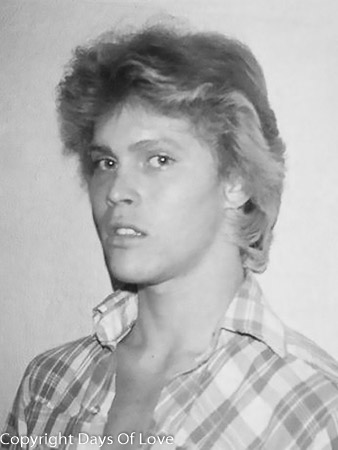

Jack Nichols and Bobby Carter
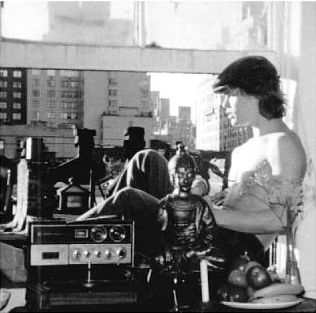
Logan Carter in New York City, 1975 (Source: The Jack Nichols Collection,
The Pennsylvania State University)
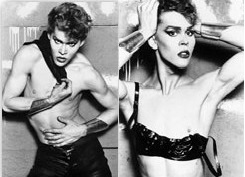

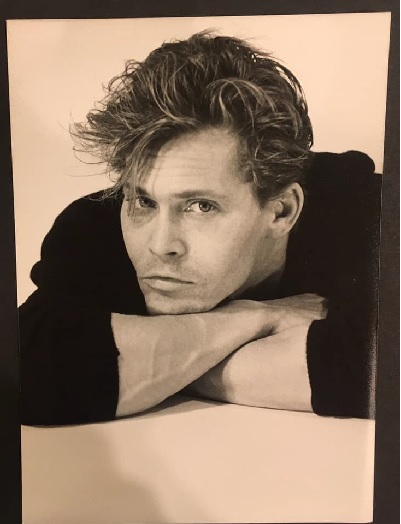
by Frazier
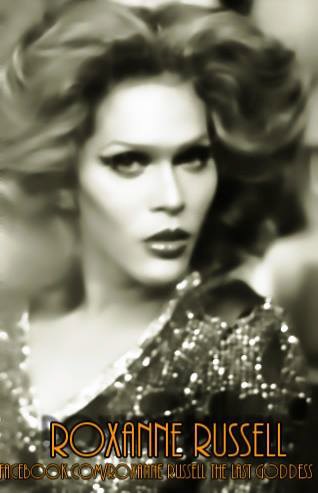
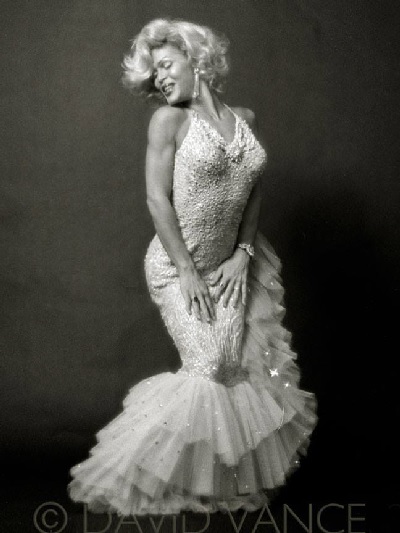
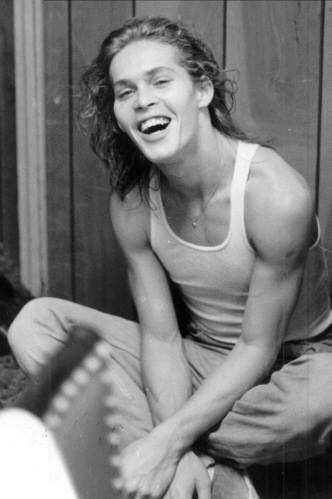
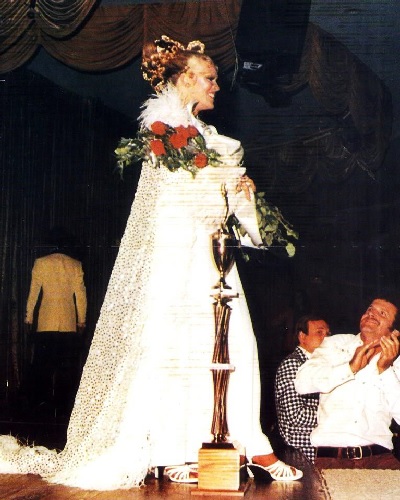
Miss Florida pageant
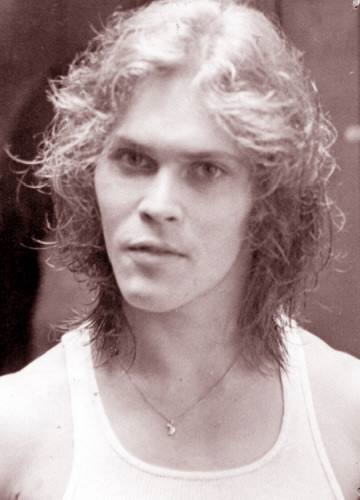
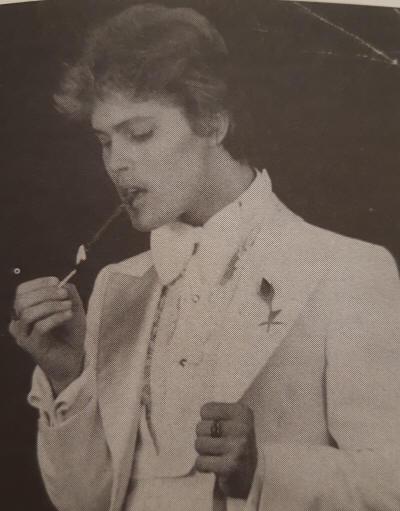
He had a small trans parts in Second Serve,
1968, Down On Us, 1984, and Love Streams, 1984. He played a wife
on Repo Man, 1984, and a hooker in Hollywood Vice Squad, 1986.
In 1985 he, and several other impersonators, did part of their stage act in
the film Dream Boys Review.
Logan died of Aids at 33.
My published books:


BACK TO HOME PAGE

-
https://zagria.blogspot.it/2014/04/logan-carter-1954-1988-model-performer.html#.WvGgLZfOPIU
 Robert
Logan Carter (born Robert Logan Finney, May 11, 1954 - June 23, 1988) was raised in Florida by his great-grandmother and then his
grand-mother Bess after his mother, a dancer named Shirley, committed suicide when he was 3 months old.
He was adopted by his grandmother second husband, Howard. At
11 he discovered Marilyn Monroe. He neglected his school work:
Robert
Logan Carter (born Robert Logan Finney, May 11, 1954 - June 23, 1988) was raised in Florida by his great-grandmother and then his
grand-mother Bess after his mother, a dancer named Shirley, committed suicide when he was 3 months old.
He was adopted by his grandmother second husband, Howard. At
11 he discovered Marilyn Monroe. He neglected his school work:












